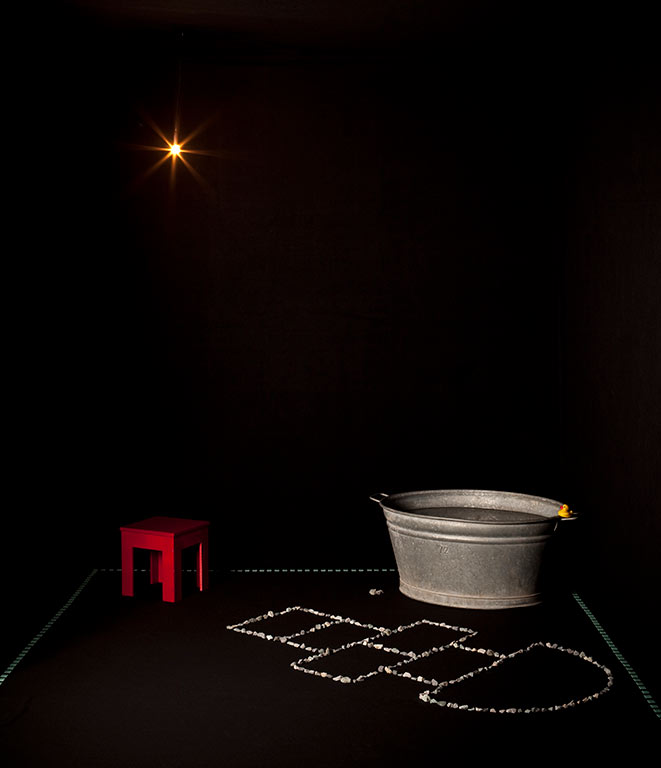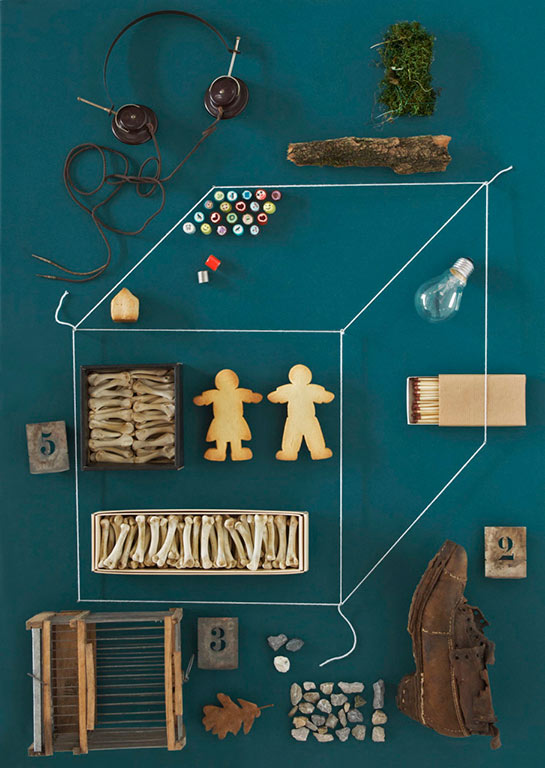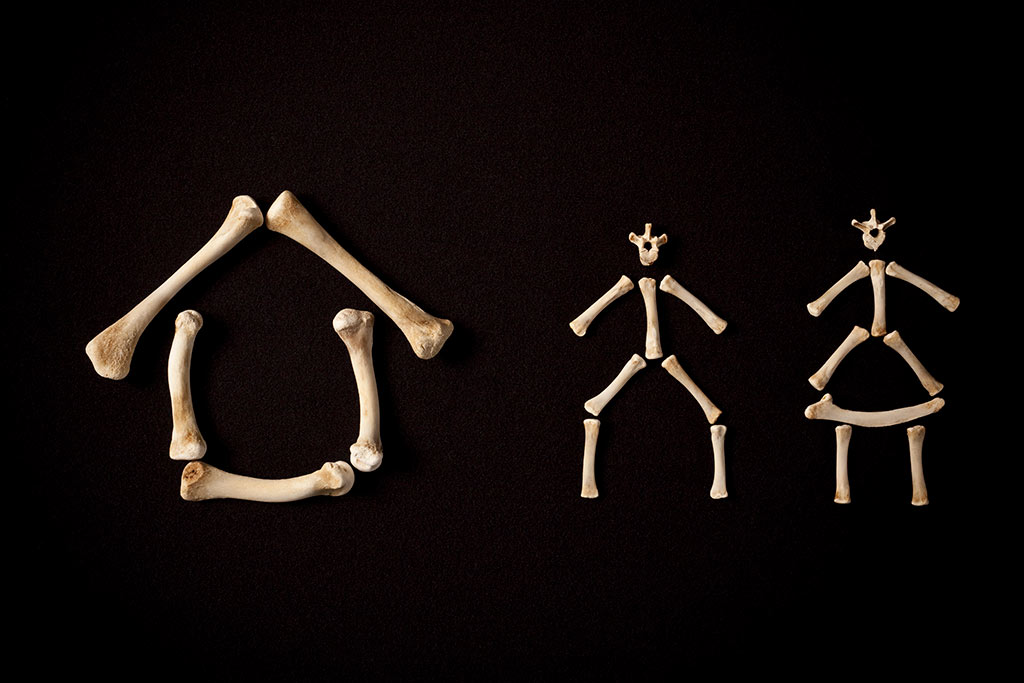The Pebble in the Shoe
Part-installation and part-theatre production, ‘.h.g.’ takes the classical fairytale of Hänsel and Gretel and suspends it somewhere between the innocence of childhood and the harsh realities of adulthood
Vani Sriranganayaki
The story began with me walking up to a person manning the door. She politely asked me to hand over my bag and phone and I obliged, surprisingly, without hesitation. She then hung a small pouch with wires around my neck, placed a headphone over my ears, handed me a small torch and briefly explained its mechanism. And that was it. She offered no further explanation and simply smiled broadly. Before I could ask her anything, the door opened and a person I saw earlier in the waiting area walked out. He too gave me a big smile and walked away. A few seconds later, another person walked out the door and asked me to come in. I followed him, now slightly nervous and hesitant, unsure as to what awaits me on the other side.

I was at the Goethe Institut in Chennai, in a room I had been to on multiple occasions previously. But that day, when I was there to check out .h.g. – a theatre installation conceived by Cristina Galbiati (the person manning the door) and Ilija Luginbühl (the person who ushered me in) of Trickster-p that retold the story of Hänsel and Gretel – the room was unrecognisable. As the door closed behind me, I became aware of my surroundings, specifically the things I expected to see but weren’t there. Gone was the room with a raised dais and a mezzanine balcony looking in, instead what was in front of me was a small, dark passage, all put together with black walls and a lone light hanging on the side. Ilija stood directly under the light and invited me to stand right in front of him. He checked the headphones first, connected it to a small iPod, checked the time and placed it within the pouch hanging around my neck. He tells me that I would be venturing in alone and that I should listen to the instructions that will be relayed through the headphones – an act in itself perfectly setting up the premise of the ‘grim’ story where children are abandoned into the unknown.

Soon enough, I heard the sounds of the forest first, and then a calm, steady, heavily accented female voice greeting me and asking me to push back a small curtain and enter a tiny room with black walls on all sides. There she asked me to leave my shoes. I looked around for a bit, expecting someone to walk in and explain why. But when nothing happened, I warily followed orders and entered the first room.
1…2…buckle my shoe;
3…4…knock at the door
The sounds of children playing filled my ears as I entered the room. A red stool sat by a small steel tub with water and a yellow duck. In front of it were white pebbles, neatly arranged for a game of hopscotch. Everything here felt miniature in size – fit only for little children. And as I sat on the stool (as directed by the voice) I couldn’t help but feel like an intruder – a giant Alice where she should not be, an audience of one silently looking onto a series of unfortunate events that are about to unfold, that would retell a fairytale of poverty and loss, of hunger and the extent of human wickedness and the blurry lines between childhood and adulthood.

Room after room – through the one with the blinding light, where muffled voices whispered something undecipherable into my ears; through the almost dark wooden cellar, where I sat jumping at sudden noises as Hänsel whispered that it was time to leave; through the dark forest of tiny trees, with a path faintly lit by the torch in my hand; all the way to the gingerbread house with its meticulously arranged bones – the voice, steady over the sounds of crickets, rushed footsteps and whispered warnings, took me through a sensorial rendition where my own dark imagination is allowed to freely mingle with the classical fairy tale. There were times when I was merely a spectator, peeking in through a hole in the wall or just gazing at the cage that Hänsel was locked in; there were times when I was either Hänsel or Gretel or both, running across the woods hand-in-hand or hatching a plan to escape; and then there were times when I was the witch, cooking up my evil plan and revelling in the smell of flesh and meat amidst my collection of bones. My role, even my presence, felt indefinite, but things came to a simmer (excuse the pun) when Gretel tells me that it was time to push the witch into the oven.

A loud cackling and the witch’s screams filled the air as what seemed like reality came crashing down.
‘All that is left are ashes,’ said the voice as I entered the penultimate room. A glass table-top Wwith dentures, a shoe, clipped nails and a small heap of ashes sat on one side, silently speaking of death and its finality. As I looked at chalk outline on the floor, the last visual remnant of a gruesome murder, the voice tells me that I have woken up from a terrible dream and guided me out. I was back where I started, but it felt slightly different now. I was not sure if the past 30 minutes even happened or if it was a figment of my imagination. All I was left with was a small white pebble lodged in my shoe, and I didn’t know how it had got there. As I walked out, I found Cristina and asked her if I could really take the pebble with me. She simply smiled and said, ‘Yes, just in case you get lost in the woods again.’
_____________________________________________________________________________________________________
.h.g. (2009 – …), Installation in 9 rooms, one prologue and one epilogue, Concept and realisation: Cristina Galbiati & Ilija Luginbühl. © CCRZ. Images Courtesy of Trickster-p.
Share